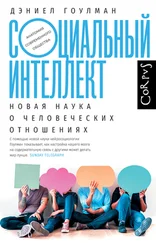Shelton A. A theatre for eating, looking and thinking: The restaurant as symbolic space // Sociological Spectrum. 1990. № 10. Р. 507–526.
Эми Трубек называет это «вкусом места»: Trubek A. The Taste of Place: A Cultural Journey into Terroir. L.: University of California Press, 2009.
Тем не менее такой подход к дизайну окружающей среды может быть с коммерческой точки зрения очень успешным. Возьмем, к примеру, феноменальный рост сети Eataly в США. Любой, кто делал здесь покупки, знает, какой это захватывающий мультисенсорный опыт. Cм. также: Spence C. et al. Store atmospherics: A multisensory perspective // Psychology & Marketing. 2014. № 31. Р. 472–488.
McKinley J. Order a Mai Tai and save paradise // The New York Times. 3.04.2009 (https://www.nytimes.com/2009/04/05/fashion/05tonga.html?_r=1&sq=Tonga%20Room&st=cse&adxnnl=1&scp=1&adxnnlx= 1239148998-kpKIJA0iS68aMaVKbRR3fg).
Welcome to the experience economy // Harvard Business Review. 1998. № 76(4). Р. 97–105.
В наилучшем сценарии атмосферность, что следует из обоих ранних примеров, – это узнаваемая природная окружающая среда, способная дополнить и усилить впечатление от еды и питья. Однако всегда существует опасность, что все эти зеркала и дым используют для отвлечения посетителя от того, что может оказаться предложением просто-напросто плохого продукта. И в самом деле, в последние десятилетия ХХ века многие комментаторы отмечали, что любой ресторан или бар, вкладывающий много денег в атмосферу, скорее всего, не обращал должного внимания на качество еды или напитков; см.: Goldstein D. The play’s the thing: Dining out in the new Russia // The Taste Culture Reader: Experiencing Food and Drink / Ed. C. Korsmeyer. Oxford: Berg, 2005. Р. 359–371. «Больше шипения, чем сути», – сказал бы Элмер Уилер. Именно так зачастую и было. И вероятно, именно так обстоит дело в низкокачественных сетевых заведениях (в хороших сетевых ресторанах думают и об атмосфере, и о еде).
То, что мультисенсорный подход к маркетингу еды и питья открывает более богатые возможности, отметили и крупные розничные предприятия. Например, калифорнийская сеть Safeway не просто сбрызгивала водой фрукты и овощи на прилавках своих магазинов, но и транслировала звуки рокочущих грозовых туч; Stuckey B. Taste What You’re Missing: The Passionate Eater’s Guide to Why Good Food Tastes Good. L.: Free Press, 2012. Р. 127. Другие ритейлеры распыляли запахи еды по всему торговому пространству; см.: White C. The smell of commerce: How companies use scents to sell their products // Independent. 16.08.2011 (https://www.independent.co.uk/news/media/advertising/the-smell-of-commerce-how-companies-use-scents-to-sell-their-products-2338142.html). См. также: Spence C. Leading the consumer by the nose: On the commercialization of olfactory-design for the food and beverage sector // Flavour. 2015. № 4:31; Spence C. et al. Store atmospherics: A multisensory perspective // Psychology & Marketing. 2014. № 31. Р. 472–488. Нью-йоркский магазин Bloomingdales устроил переполох, соединив сразу все пять чувств на своих рождественских витринах в 2015 году. На витрине «Вкус» красно-белый медведь стоял на горе красно-белых леденцов, а дозатор снаружи витрины выдавал прохожим завернутые сладости.
Цит. по: Rintoul C. The next chef revolution (blog Food is the New Internet: https://medium.com/food-is-the-new-internet/ the-next-chef-revolution-dfe75f0820d2#.k62l0°2e8). См. также: Palling B. Juicy profits are off the menu // The Sunday Times. News Review. 20.09.2015. Р. 4.
Ранние упоминания в литературе о трапезах в темноте: Borges J. L., Bioy-Casares A. An abstract art // A Literary Feast / Ed. L. Golden. N. Y.: The Atlantic Monthly Press, 1993. Р. 70–73. Думается, не стоит идти туда обедать; см.: Spence C., Piqueras-Fiszman B. Dining in the dark: Why, exactly, is the experience so popular? // The Psychologist. 2012. № 25. Р. 888–891; Spence C., Piqueras-Fiszman B. The Perfect Meal: The Multisensory Science of Food and Dining. Oxford: Wiley-Blackwell, 2014. Ch. 8. Как подчеркивает один эксперт: захватывающее удовольствие от хорошей еды зависит от ее подачи» ( Anderson A. T. Table settings: The pleasures of well-situated eating // Eating Architecture / Ed. J. Horwitz, P. Singley. Cambridge, MA: MIT Press, 2004. Р. 247–258.
Robson S. K. A. Turning the tables: The psychology of design for high-volume restaurants // Cornell Hotel and Restaurant Administration Quarterly. 1999. № 40(3) (1999). Р. 56–63.
См. также: Edwards J. S. A. et al. The influence of eating location on the acceptability of identically prepared foods // Food Quality and Preference. 2003. № 14. Р. 647–652; Meiselman H. L. et al. Demonstrations of the influence of the eating environment on food acceptance // Appetite. 2000. № 35. Р. 231–237; Petit C., Sieffermann J. M. Testing consumer preferences for iced-coffee: Does the drinking environment have any influence? // Food Quality and Preference. 2007. № 18 (2007). Р. 161–172; Ryu K., Han H. New or repeat customers: How does physical environment influence their restaurant experience? // International Journal of Hospitality Management. 2011. № 30. Р. 599–611. Можно только вообразить влияние окружающей среды на гостей тех ресторанов и баров, которые начали открываться в общественных туалетах, см., например, Magrath A. Would YOU eat here? Inside the London bars and cafes opening in abandoned public toilets (just remember to wash your hands!) // Daily Mail Online. 9.10.2014 (https://www.dailymail.co.uk/travel/travel_news/article-2786195/Would-YOU-eat-Inside-London-bars-cafes-opening-abandoned-public-toilets-just-remember-wash-hands.html).
Читать дальше
![Чарльз Спенс Гастрофизика. Новая наука о питании [litres] обложка книги](/books/388013/charlz-spens-gastrofizika-novaya-nauka-o-pitanii-cover.webp)





![Колин Кэмпбелл - Китайское исследование - обновленное и расширенное издание. Классическая книга о здоровом питании [litres]](/books/388520/kolin-kempbell-kitajskoe-issledovanie-obnovlennoe-thumb.webp)
![Дэвид Райх - Кто мы и как сюда попали [Древняя ДНК и новая наука о человеческом прошлом]](/books/396012/devid-rajh-kto-my-i-kak-syuda-popali-drevnyaya-dnk-i-thumb.webp)




